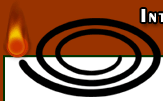






|
|
|||||

|

|

|

|

|
||
|
Ecotoxicology - Pesticide Classification - Fungicides
The control of fungal diseases of plants with chemicals has some inherent difficulties. Firstly, the pathogen and the plant host are physiologically very similar and this makes phytotoxicity a major problem. Secondly, access to the pathogen is not always easy as they spend most of their life-cycle within the tissues of the host plant. Finally, it is often too late if the fungicide is applied when the first symptoms of the disease appear and so there is often a need for prophylactic chemical control. Table 4: Classification of Fungicides summarises the classification of the major fungicides currently in use. As with insecticides and herbicides the classification of fungicides is not straightforward. They can be classified according to: chemical composition; application site; timing of application and mode of action or by product behaviour. Of these the most commonly used divisions are according to chemical class (as in Table 4: Classification of Fungicides) and timing of application, that is timing of application relative to the stage of infection of the crop. Protectant fungicides are applied to the plant surface before infection occurs, they remain on the surface and kill any fungal spores or bacterial cells that come into contact with them. Protectant fungicides tend to be broad spectrum and be effective against a wide range of fungal diseases. To achieve a constant level of protection it may be necessary to reapply them at regular intervals to replace deposits lost to rain run-off or abrasion. Curative fungicides are applied after initial infection, usually quite early on in the progress of the disease so that the infection might be destroyed before it produces visible symptoms. They are largely systemic being absorbed by the roots, seeds or leaves of the plant and then translocated within it. They tend to be much more specific than protectant fungicides and for this reason are more prone to the development of pathogen resistance. Finally, eradicant fungicides are applied when an infection has already become visible and for preventing further sporulation and spread of the disease. Table 4: Classification of Fungicides
|
||||||||||||||||||||||||||||||||||||||||||||||||||||||||||||||||||||||||||||||||||||||||||||||||||||||||||||||||||||||||||||||||||||||||||||||||||||||||||||||||||||||||||||||||||||||||||||||||||||||||||||||||||||
|
|